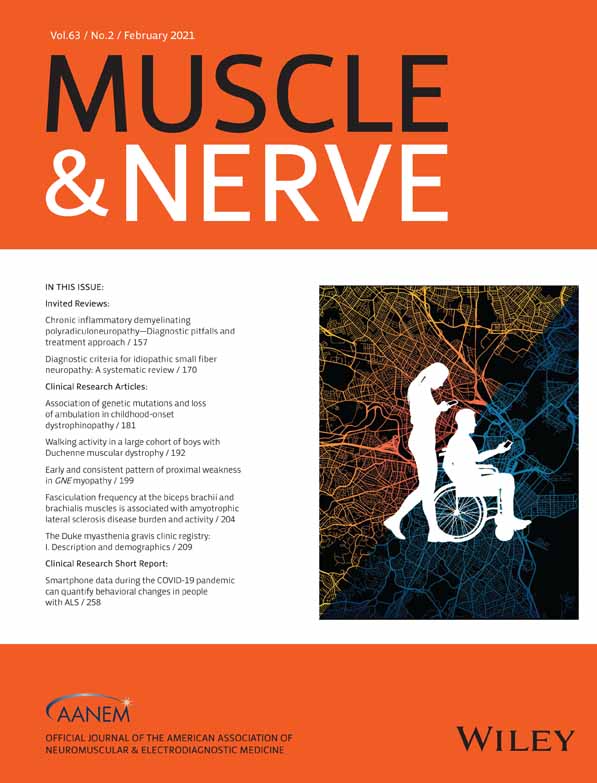Sensitivity and specificity of single and combined clouds analyses compared with quantitative motor unit potential analysis
Funding information: Clinical Research Project of Nanfang Hospital, Southern Medical University, Grant/Award Number: no. 2018CR007; President Foundation of Nanfang Hospital, Southern Medical University, Grant/Award Number: no. 2017C029
Abstract
Introduction
Turns-amplitude, number of small segments (NSS)-activity, and envelope-activity clouds are three methods of electromyography (EMG) interference pattern analysis. Our objective was to evaluate the sensitivity and specificity of each individual cloud analysis and combined clouds analysis to compare with that of quantitative motor unit potential (QMUP) analysis.
Methods
A total of 379 muscles from 100 patients were analyzed by both QMUP and clouds analyses. Calculation of sensitivity and specificity was based on the clinical diagnosis as the “gold standard.”
Results
For discrimination of abnormal vs normal and neuropathic vs non-neuropathic, combined clouds analysis had greater sensitivity than QMUP analysis and any single cloud analysis, but there were no differences in specificity. For discrimination of myopathic vs non-myopathic, combined clouds analysis and single cloud analysis had greater sensitivity than QMUP analysis, but there were no differences in specificity.
Discussion
Combined clouds analysis was superior to QMUP and each single cloud analysis for distinguishing normal, myopathic, and neuropathic muscles.
5 CONFLICT OF INTEREST
The authors declare no potential conflicts of interest.




